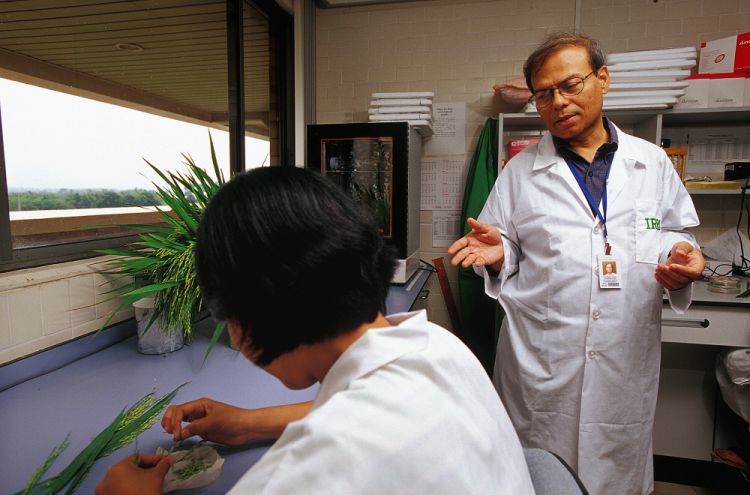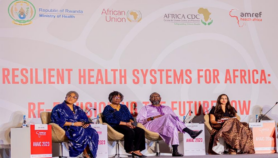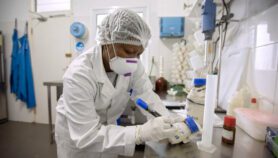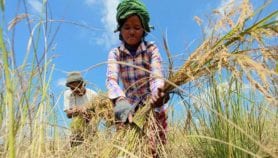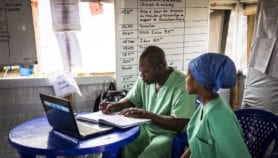By: Francesco Obino
Send to a friend
The details you provide on this page will not be used to send unsolicited email, and will not be sold to a 3rd party. See privacy policy.
Collaborative research could propel SDG implementation but there are a few drivers missing, says Francesco Obino.
For researchers, working on questions of development means talking more — and working more — with peers. The new framework of the Sustainable Development Goals (SDGs) should help revive an old debate about the inherent advantages of collaborative and interdisciplinary knowledge as a basis for deliberating on action and policy.
However, that debate remains more talked about than practised. It should, in fact, be at the core of strategic efforts on SDG implementation and move both to the highest levels of policy and the lowest levels of practice.
What is conspicuously missing is not only funding and institutional buy-in for more collaborative research to address complex questions in development but also the right attention to the incentives, formats and tools that can encourage researchers to collaborate more — without having to choose between collaborative work and work that will advance their academic careers.
Collaboration vs. specialisation
Collaboration is not the standard in the world of research: academic training, career progression and publishing are all defined by great specialisation.
“Experimental initiatives from around the globe suggest that something can change — without necessarily changing the current rules of the academic game.”
Francesco Obino, Global Development Network
This has been particularly the case since journals moved online, easily connecting researchers with similarly narrow research agendas across the globe. Only very few fields are deliberately built as interdisciplinary; in the social sciences, the most obvious example is geography.
The increasingly competitive nature of the international academic market is another reason. It turns collaborative, generalist research into something that only seasoned or tenured researchers can afford to venture into.
Yet, experimental initiatives from around the globe suggest that something can change — without necessarily changing the current rules of the academic game.
In particular, innovation in the use of incentives, formats and tools can be the key to promoting collaborative research. Three examples show the way.
Collaboration on modelling work
Alexis Drogoul, a researcher in informatics at the French Institut de Recherche pour le Développement, claims that artificial intelligence, modelling exercises in particular, can drive collaborative research on development questions.
According to Drogoul, who has been writing on the topic for over two decades, the amount of knowledge needed to build a computational model of development scenario — like the impact of climate change on the Mekong River delta — offers the ideal opportunity to have economists, sociologists, legal experts and climate change scientists sit at the same table.
He argues that the lack of control over the exercise —particularly over the technical side of modelling (the coding is run by experts in informatics) — inevitably brings academics from different disciplines to focus on knowledge rather than disciplinary debates.
Through such an exercise, he argues, academics select and contribute the soundest and most relevant knowledge from their respective fields to inform the model design; they then translate that knowledge so a multidisciplinary group and coding experts can understand it. In the process, they explore how separate research streams interact.
Drogul presented his ideas at the tenth edition of a multidisciplinary summer school held in Da Nang, Vietnam, itself an experiment in interdisciplinary research training. There he runs a workshop on modelling, which engages young researchers from across the social sciences and development practitioners.
The IFS platform
Another interesting experiment, this time focusing on incentives, comes from the experience of the International Foundation for Science (IFS) in Sweden.
IFS’s mandate is to support young researchers in universities in developing countries, which includes encouraging joint work with developed country researchers. It publicises calls for funding and invites those who respond to join an online platform where they can interact, create teams and develop collaborative research proposals, in a closed-door marketplace for ideas and competencies.
As part of the process of developing a joint research proposal, teams have to pick one of five possible organograms to manage their team work. This process allows differences in individual and institutional incentives for collaboration to emerge, be addressed and possibly be ironed out, even before the start of the research. This lowers both the risk and transaction costs for collaborating.
The model takes seriously the difference in incentive structures that researchers from Northern and Southern countries face when collaborating with each other. It also takes the potential implications for running a collaboration equally seriously, keeping the award of a research grant as the common goal.
Harnessing social media
A final example comes from medical research. The free, online platform MyExperiment.Org leverages social media tools. Through clear rules regarding the content posted, its nature and ownership, it allows researchers in genetics to share with a global community of peers their “workflows” — the procedure they use to search for specific sequences of genes in DNA chains.
The user-friendliness and clear functionality of the platform are enough to reverse researchers’ inclination to keep their toolbox private and exclusive, disclosing their methodology only in published papers.
The organisers estimate that 30 per cent of all genetics research workflows are currently shared and accessible on the platform. The benefit for the scientific community and individual researchers is immense.
Role of other players
All three cases have something in common: the careful design of individual incentives, and collaboration formats and tools reverses some of the institutional incentives that set a high professional opportunity cost for researchers working together across silos.
They also show that the devil is in the details, namely in the design, management and moderation of collaborations.
Leveraging and combining these and other similar strands of work will require though a few stars to align. International agencies have a clear role to play here: they need to support experimentation in the production of knowledge for development, including at the cross-country scale.Research institutions and grant-giving bodies should, at their end, explore the use of criteria related to the societal impact of research. This should be applied to assessments of individual academic track records, resource allocations and career progressions — to reward collaborative work across disciplines as much as they do disciplinary work, particularly if driven by an interest in societal impact.
Finally, researchers need to be as ready as ever to take risks to address question of urgent societal impact, and work out of their comfort zones. Given the substance of the SDGs, supporting new formats for collaborative research in the next decade will be of the essence.
Francesco Obino is programme manager at the Global Development Network. He can be contacted at [email protected].
This piece was produced by SciDev.Net’s South-East Asia & Pacific desk.


